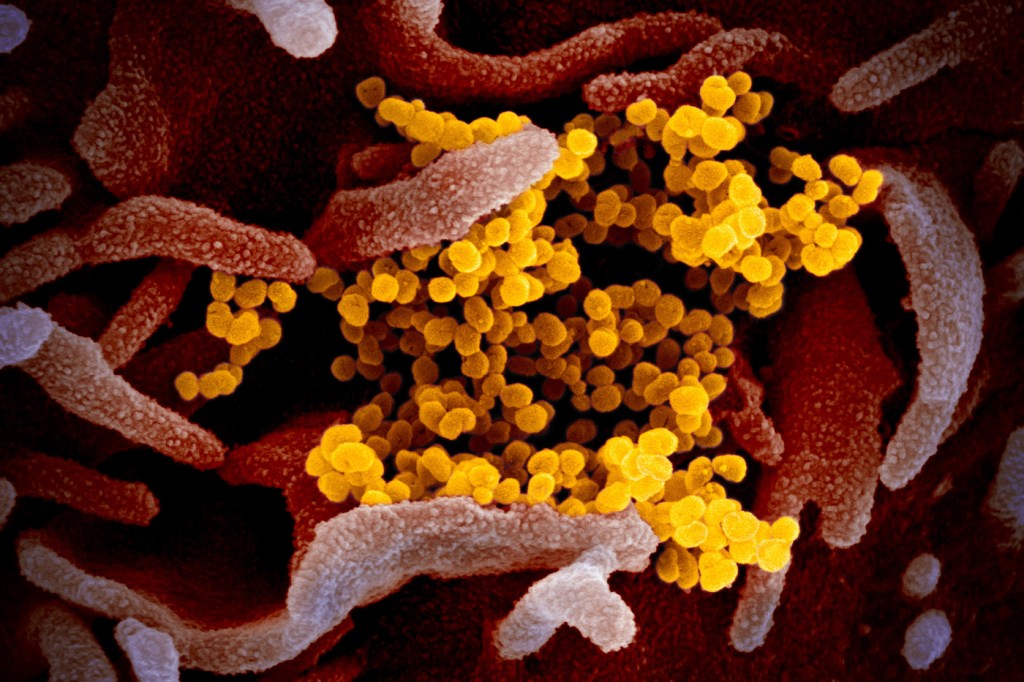Here’s why we shouldn’t refer to the novel coronavirus disease, COVID-19, as simply ‘coronavirus’

Since mid-February, the disease caused by the coronavirus has been known as COVID-19, short for coronavirus disease 2019. The new name was chosen by the World Health Organization because it’s a more accurate name for the disease caused by a specific strain of the fairly common coronavirus.
Coronaviruses are a large family of viruses that can cause symptoms ranging from those of a mild cold to severe pneumonia.
The specific strain of the virus associated with COVID-19, discovered in China’s Hubei Province in late 2019, has been named severe acute respiratory syndrome coronavirus 2, or SARS-CoV-2.
Still, many news outlets continue to use “coronavirus” as shorthand to refer to this specific disease and the toll it is taking around the world, and that’s not totally accurate.
The naming convention follows the same logic as that for HIV/AIDS: Human immunodeficiency virus is the virus that can—but doesn’t always—lead to acquired immunodeficiency syndrome.
Consider it another way: Some movies are scary, but most are not. If you’re afraid of horror movies, it wouldn’t be wrong to say “Movies scare me,” but neither would it be totally accurate. The more accurate statement is: “Horror movies scare me.” In this metaphor, using “coronavirus” is the same as using “movies.” Using “COVID-19” is equivalent to using “horror movies.” One is more specific, and therefore, more accurate.
At some point in their lives, most adults have likely caught some form of a coronavirus, spent a week or two with a runny nose and a cough, and then recovered. Symptoms of COVID-19, the disease caused by the specific strain of coronavirus in the news right now, can range from mild to severe respiratory illness, including fever, cough, and shortness of breath.
So, why did WHO choose “COVID-19,” and not something a bit catchier?
The new name was chosen because it’s easy to pronounce, and it avoids any implication of association with people, places, or animals.

Wendy Parmet is Matthews University Distinguished Professor of law and director of the Center for Health Policy and Law at Northeastern. Photo by Mary Knox Merrill/Northeastern University
“Having a name matters to prevent the use of other names that can be inaccurate or stigmatizing,” said Tedros Adhanom Ghebreyesus, the director-general of the World Health Organization, in a press conference. “It also gives us a standard format to use for any future coronavirus outbreaks.”
The new name divorces the disease from an unfair association with Wuhan, China, where it was first discovered in December 2019. Wendy Parmet, Matthews Distinguished University Professor of law, who studies public health at Northeastern, told TIME magazine that had the name referred to Wuhan, it would have put a “tremendous stigmatization on the people of Wuhan who are the victims” of the disease.
Researchers in a number of different disciplines at Northeastern have been tracking various aspects of the disease, and the university has a robust set of policies in place to prepare for an outbreak of the disease, as well.
Alessandro Vespignani, who directs the Laboratory for the Modeling of Biological and Socio-technical systems at Northeastern, has been working with an international collaboration of researchers to try to predict the potential spread of the disease. Their prediction map is publicly available and constantly being updated with information coming from China and other countries.
For media inquiries, please contact media@northeastern.edu.





